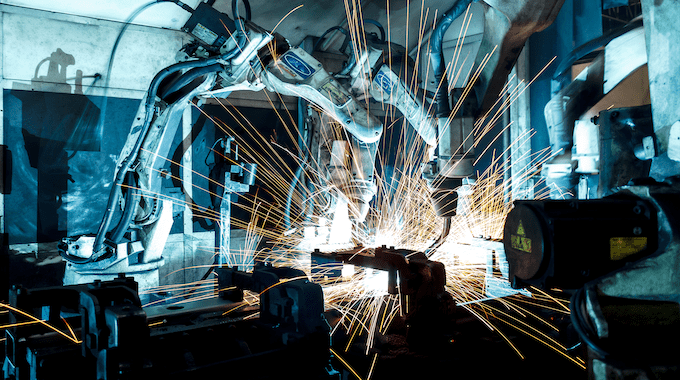- Solutions
ENTERPRISE SOLUTIONS
Infuse new product development with real-time intelligenceEnable the continuous optimization of direct materials sourcingOptimize quote responses to increase margins.DIGITAL CUSTOMER ENGAGEMENT
Drive your procurement strategy with predictive commodity forecasts.Gain visibility into design and sourcing activity on a global scale.Reach a worldwide network of electronics industry professionals.SOLUTIONS FOR
Smarter decisions start with a better BOMRethink your approach to strategic sourcingExecute powerful strategies faster than ever - Industries

Compare your last six months of component costs to market and contracted pricing.

- Platform
- Why Supplyframe
- Resources
An electronic vehicle needs 10 times more capacitors to get the wheels going vs. its internal combustion cousin. 22,000 vs 2,000. Experts believe at least ⅔ of global car sales will be EVs by 2040. That’s a lot of capacitors.
Studies predict that broadband enabled US homes will have 20 or more connected devices by 2025, tripling the value of the IoT market, from $826 million in 2019 to $3.28 billion by 2027. That’s a lot of devices. There’s also booming demand for remote and telehealth devices, working from home is at record levels, and people are buying fitness wearables at record paces.
All-in-all, it’s a boom time for the global electronics component industry, with 9.2% CAGR over the next six years.
Rising NPI Complexity Clashes With Falling Supply
How do you reconcile that kind of growth with the record shortages our industry is experiencing now and into the next year? More importantly, how are firms keeping track of the increasing complexity of life’s essential things as they introduce their own new products.
That was the question on our minds when we commissioned our latest study, The Supplyframe NPI (New Product Introduction) and Sourcing Study, in partnership with Lifecycle Insights. We talked to 251 companies in the global electronics value chain about the challenges they are facing as they create a bill of materials and ultimately bring their products to market.
Our respondents work in these fields:
- Computer Systems 34%
- Industrial Equipment and Heavy Machinery 33%
- Automotive and Mobility 24%
- Consumer Electronics 22%
- Telecom/Networks 22%
- Aviation, Aerospace, Defense 18%
- Medical Devices 16%
The Complexity Crush
The first of our four pieces on the NPI Sourcing Study looked at issues keeping the Bill of Materials accurate and up to date. What we saw there was that it’s tough to keep your BOM accurate in the face of shortages and lack of market intelligence. Today we’re tackling the next step of the project launch process and discussing the complexity of the products themselves.
Given the increase in connected products and devices it’s not a surprise to see that product complexity has basically increased across the board, with close to 1/3rd of businesses replying that complexity increased by more that 50% no matter the question.
Let’s take a closer look.
“How have the following increased or decreased compared to the prior generation of products?”
Response #1: Number of components per product.
No surprise here. 28% of respondents said the number of components per product increased by more than 50%. That tracks with the explosive need for components across the booming IoT and connected automobile sectors.
Response #2: Number of indented levels in a BOM.
An indented BOM includes lower level components and subassemblies necessary to complete a product. And as the number of connected devices (washing machines, air conditioners, cars, toothbrushes) grows, the number of subassemblies to include the requisite sensors and cameras will balloon along with them. 63% of our respondents indicated increases of indented levels in their BOMs, and we expect to see that number rise each year.
Response #3: Number of sensors per product.
Only 12% of respondents told us they hadn’t seen an increase in the number of sensors they’re seeing in each new product. That speaks volumes about the growing complexity of electronics products today.
Response #4: Number of circuit boards per product.
Another big increase. 40% of the businesses we talked to said the number of boards per product was up 20-50%, and 24% said it was up more than 50%. So, for almost one quarter of respondents, circuit board needs were up more than 50%. If they needed 100, now they need 150. And how to get that 150? Market intelligence and visibility.
Response #5: Number of companies supplying components per product.
Interestingly enough this question gave us one of the most balanced responses. About 1/3rd of respondents said the increase was less than 20%, 1/3rd said between 20-50%, and 1/3rd said the number of companies supplying components per product increased by more than 50%. This makes sense, given the increase in subassemblies and the number of components per product.
Multisourcing is a topic we discuss often, and given that shortages are going to be a part of our life for a little while longer, it’s essential that businesses look to diversify their sources of vital components. Our DSI Solutions can also help with this aspect of NPI.
Helping You Achieve Resiliency and Flexibility
Market intelligence and visibility are the answer to each of these issues that crop up in the NPI process. They’ll help you keep track of the rapidly increasing component requirements of today’s electronics, assist in identifying alternate sources of key components, and mitigate rising costs. Supplyframe’s DSI Resources are designed to do all that and more.
Be sure to join us for the next installment of our series on the NPI journey when we take a look at the specific pain points driving change in product development.



